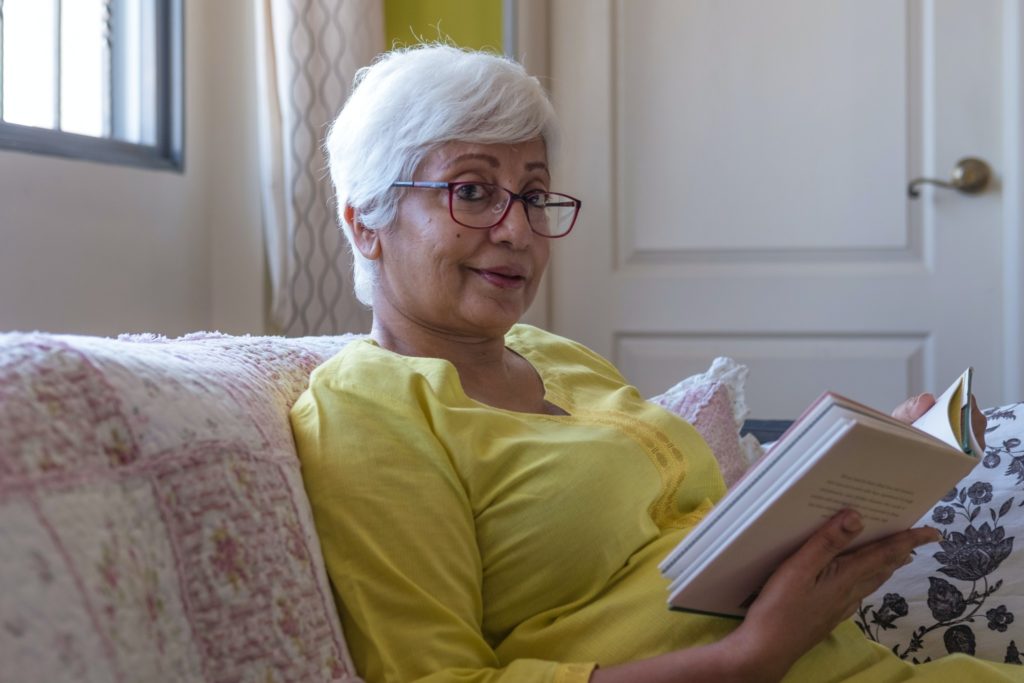A Multiliteracies Approach to Teach Adult Second Language Learners in the Community
Multiliteracies is a term coined by the New London Group (1996) to explore critical and creative approaches to literacy that support learners from diverse backgrounds. Building on a social justice perspective, a multiliteracies approach incorporates multimodal methods to create transformative opportunities for learning and augment more traditional approaches to literacy (Cope & Kalantzis, 2009). This article draws upon findings from a Social Sciences and Humanities Research Council of Canada (SSHRC) study[i] on multiliteracies that gathered original film footage of teaching and involved face-to-face interviews, document analysis of teaching materials, and observations of educators and learners. Although much research on multiliteracies is centered on students in grade schools, our study explores how multiliteracies may inform pedagogical strategies for older learners. In this paper, we focus on adult second language learning in community-based programs.
In our research, we consider how pedagogical approaches based on multiliteracies may support second language learning, how technology can be thoughtfully and strategically implemented to support teaching, and how artistic and multimodal approaches build on the critical lens of New Literacies (Crowther et al., 2006) to address literacy from a social justice perspective. We need to be innovative in engaging 21st-century adult learners with digital literacies as well as helping them to attain fluencies with oral and written language to understand how communication shapes our lives and our world.[ii]
To illustrate how multiliteracies can offer insights into the second language learning experiences of adults, this paper offers examples of adult educators working with English Language Learners (ELLs) from the Multicultural Council of Windsor and Essex County, Ontario as well as an example from an adult French language learning program, also located in Windsor, Ontario. Faculty, educators and practitioners may wish to explore our web platform that provides multiple other examples at www.multiliteraciesproject.com. The website includes short videos, interview clips and sample material guides, in addition to scholarly articles and presentations that highlight teaching strategies using a multiliteracies approach in a range of contexts.
Exploring Cultural Identities Using Multimodality
Multimodality refers to using two or more modes (written, oral, visual, tactile, spatial, gestural) in combination to create meaning. Authentic learning involves tapping into adult learners’ cultural backgrounds and connecting that prior knowledge and range of formal/informal educational experiences to their target language goals (Paesani et al., 2016).
Ninia Sotto, an adult educator teaching at intermediate levels at the Multicultural Council, invites adult ELLs to what she terms The Punch-Off, wherein adult ELLs make a mixed drink. She notes, “the special instruction was to add something from your country or your kitchen, or something that you would similarly use in a similar drink from your country, other than alcohol.” With a five-dollar budget and a trip to the local grocery store as a class, the competition was then shared with other ELL classes and instructors who became the judges, scoring their favourite punches.
This activity is multimodal yet also teaches fundamental basic literacy skills. Adult ELLs buy the ingredients and make the punch (gestural and kinesthetic modes); engage in small talk with the judges and peers (oral and aural modes); and produce recipe cards (visual modes involving fonts, graphics, colours, framing and written modes). Language learning that incorporates multimodalities provides adult ELLs with the chance to express their thoughts in more advanced ways than what they may be capable of otherwise producing if they are at the emerging stages of learning a new language. Sotto reflects that building in activities like The Punch-Off,
even made the classroom work (e.g. paragraph writing, speaking practice for small talk, listening and grammar practice for W/H questions (based on what judges might ask them), speaking practice for expressing needs and gratitude) a lot more organic and enjoyable.
Adult learners can share a part of their heritage by preparing a drink or food that symbolizes aspects of their culture or acts as a prompt to recall personal anecdotes and related cultural mores.
Combining Multimodality and Technology to Teach in a Second Language
To help adult ELLs overcome language acquisition obstacles, intermediate level ELL adult educator Karin Falconer, who also works at the Multicultural Center, notes that “not just doing one path in learning” can make all the difference. For example, she says,
on the computer, I remember we were doing a lesson on directions and being able to follow directions on a map. Some students were struggling with that, but then we got a little toy car, and we used that to drive on the map on the board. And they went, “Oh! Now I understand!”
In this case, using a multimodal approach, where learners could physically move the car and see how to trace it along the lines depicting the roads, they were able to understand the lesson much better than when the map was presented in a two-dimensional, digital image. Cummins and Early (2015) observe that “new technologies are only as powerful as the pedagogy they support” (p. 137). Effective educators, therefore, have to be attentive to students’ responses and adapt their teaching strategies to accommodate their learners’ needs.
In many situations, the appropriate use of technology may enhance opportunities for learning language. Falconer, has found in everyday interactions that she can quickly bring a vocabulary word up on the screen to Google translate it into the 10 different languages of her learners. Or, she finds that she is able to engage learners with images. Falconer notes, “It is so much easier to show a picture of salmon than try to say it is a pink fish that… to describe it.” Multimodality clarifies and reinforces the concept of the new word “salmon” through visual, oral and written modes. The instructor can search online and project a visual image of a salmon, pronounce the word “salmon” in English speech and type the English written word on the screen to identify it. Multimodality and technology can facilitate second language instruction with culturally and linguistically diverse students. Rowsell (2013) notes that the “parallel processing of multimodal text-image information sources…require sociolinguistic competencies of expanding conceptions of ‘grammar’ to include semiotic imagery and code” (p. 62). Adult learners need to interact with, create and critique digital texts as an integral component of becoming more literate. Plurilingualism goes hand in hand with engaging in multiple forms of literacy.
Digital Literacies to Enrich Adult Language Learning
At an adult French language learning program in Windsor called French Lit., the director, Towela Okwudire, shares her strategy of having students listen to French radio or podcasts. She notes that “it is hard to listen to the language spoken in real-time. And many times they [students] come out feeling like, ‘Wow, I actually can understand better, and it is tough but let us do it.’ ” Listening with no visual context is challenging.
She often assigns the task of listening to podcasts or the radio for half an hour a week as the homework, but she instructs:
Do not do it all at once. Do 10 minutes, 10 minutes, 10 minutes. And [with] that activity, the goal is not to understand. The goal is just to develop endurance to be able to hear a second language without getting tired…the objective is just to [be], “I can hear it and not get overwhelmed.”
Often she suggests that her students, who are juggling French classes between work and other commitments, “Listen to it in your car.” Okwudire recognizes that the demands for adult learners are different than those of children, and so the use of simple technologies such as podcasts or radio broadcasts can allow her students to multitask and adjust their schedule to fit in opportunities for learning.
Okwudire reflects on building aural skills honed through listening to the radio:
One of my friends…works for Radio Canada, and she was talking about how there is this idea that radio is disappearing…she is 23, and on the contrary, she feels that, thanks to podcasts, it seems to be something that actually remains quite important…because the person on the radio or the podcaster has to use sound, to create pictures, and to create images. There is no visual…that is tough. And for second language learners, it is even tougher, but it is such a neat exercise.
Podcasts are authentic cultural resources. They are not contrived as is the case with many second language learning labs used in conjunction with textbooks to promote listening skills. Podcasts often use a whole range of music and sounds in addition to voice to convey meaning. Even simple technologies, when used appropriately, can foster important opportunities for adults to enhance their second language learning capabilities.
Conclusion
Multiliteracies offers a contemporary approach to language acquisition that draws upon sociocultural, multimodal and technological resources for adult second language learners. Burgess (2020) states “multiliteracies recognizes that the representational modes people use for communication are embedded in culture and context and set within present-day realities of growing linguistic and cultural diversity, rapid globalization, and dynamic technological advancement” (p. 801). Language learning is complex in large part because it is embedded in societal power structures, which are often shifting and difficult to discern. For those adults learning an additional language for any number of reasons, they must take risks and know they will make multiple mistakes – not only in terms of grammatical errors, but also forging ahead to gain insight into the cultural context of the language they are learning. The stakes for adult learners are often that much higher, especially for immigrants, because of their increased responsibilities to navigate institutions in a new language and culture to find employment, education and healthcare. They often must provide for children and extended family. Ensuring these adult learners are engaged in meaningful language education is foundational for everyone in society, especially in the North American context of high levels of immigration, which makes it all that much more important to get it right.
References
Burgess, J. (2020). Through a lens of affect: multiliteracies, English learners, and resistance. Discourse: Studies in the Cultural Politics of Education, 41(5), 799-811.
Cope, B., & Kalantzis, M. (2009). “Multiliteracies”: New literacies, new learning. Pedagogies: An International Journal, 4(3), 164-195.
Crowther, J., Hamilton, M., & Tett, L. (Eds.). (2006). Powerful Literacies. National Institute of Adult Continuing Education.
Cummins, J. & Early, M. (2015). Big ideas for expanding minds: Teaching English Language Learners across the curriculum. Pearson.
Holloway, S. M. & Gouthro, P. A. (2020). Changing literacies/changing learning: Using a multiliteracies approach to enhance learning opportunities for adults. World Literacy Summit.
New London Group. (1996). A pedagogy of multiliteracies: Designing social futures. Harvard Educational Review, 66(1), 60–92.
Paesani, K., Willis Allen, H., Dupuy, B. (2016). A multiliteracies framework for collegiate foreign language teaching. Pearson.
Rowsell, J. (2013). Working with multimodality: Rethinking literacy in a digital age. Routledge.
Footnotes
[i] We received funding from Grant 435-2018-0706 from the Social Sciences and Humanities Research Council of Canada Insight grant.
[ii] These introductory paragraphs are based on an abstract published for a scholarly conference at the World Literacy Summit presented by Holloway and Gouthro (2020).
Biographies
 |
 |
|---|---|
| Susan M. Holloway (lead author) | Patricia A. Gouthro (second author) |
| Susan M. Holloway is an Associate Professor in the Faculty of Education at the University of Windsor, Ontario, Canada. Her research interests include literacy, multiliteracies, sociocultural approaches to second language acquisition, adult education, English methodology, and critical theory. She is the Principal Investigator on the SSHRC grant discussed in this article. | Patricia Gouthro is a Professor in Graduate Studies in Lifelong Learning in the Faculty of Education at Mount Saint Vincent University, Halifax, Nova Scotia. She is past president of the Canadian Association for the Study of Adult Education and has served as an editor for the International Journal of Lifelong Education. |

